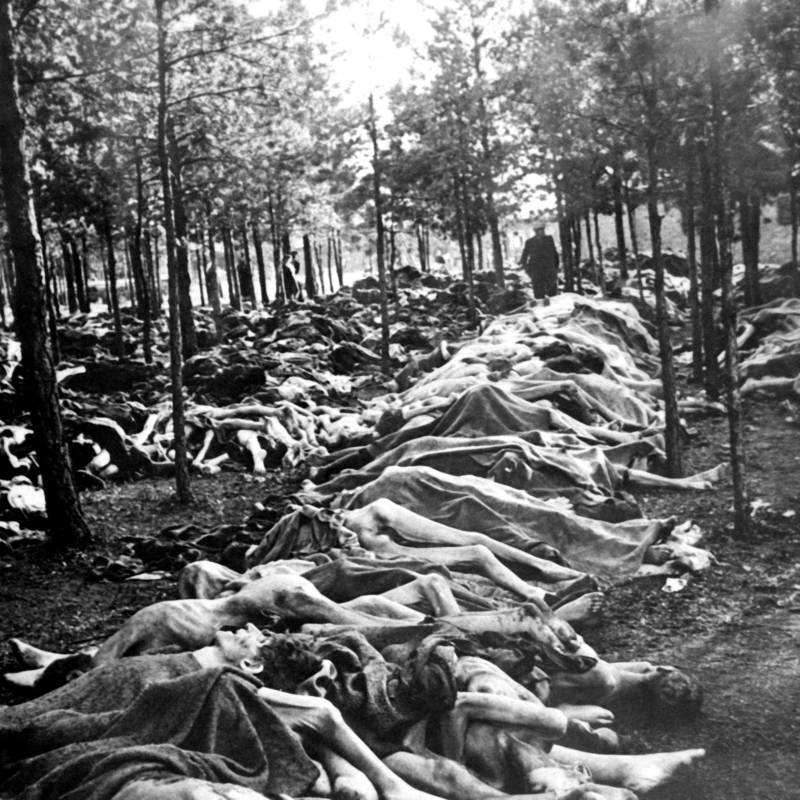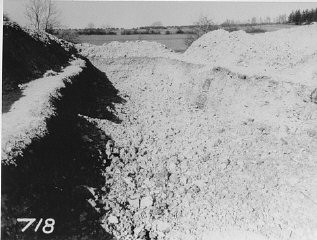
The shooting carried on throughout the day – and into the next. Members of Einsatzgruppen C opened fire, alongside two groups from the German Order Police and troops from the collaborationist Ukrainian Auxiliary Police. The victims were led to the ravine in small groups. “People were asked to take their most treasured possessions with them, then at a particular spot they had to give away their proof of identity, then at another point they had to give away the possessions they brought, and finally there was a place at which they had to undress.” “There was a whole process starting from the place where the people were forced to gather,” Boris Czerny, a professor of Russian literature and culture at the University of Caen and a specialist in the history of Jews in Eastern Europe, told FRANCE 24. The Soviet NKVD had already used this site to carry out massacres – it provided an out-of-the-way firing range near the big population centre of Kyiv.

They were all taken to Babi Yar, which means “grandmother’s ravine” or “old woman’s ravine” in Ukrainian. Most were moving in a self-absorbed way, in silence and with a doomed look.

Here and there old and sick people who lacked the strength to move by themselves were being carried, probably by sons or daughters, on carts without any assistance. And the children – my God, there were so many children! All this was moving, burdened with luggage and children. Ukrainian engineer Fedir Phido recounted the sorrow of the Jews on their way to Babi Yar, as quoted by Dutch historian Karel Berkhoff in his book Harvest of Despair: Life and Death in Ukraine under Nazi Rule: “Many thousands of people, mainly old ones – but middle-aged people were also not lacking – were moving towards Babi Yar. The German occupiers demanded that Kyiv’s Jews gather near a train station on the city’s outskirts for “resettlement” elsewhere those who refused to go there were threatened with death.Ī German Einsatzgruppen soldier talks to two unidentified women at the top of the Babi Yar ravine, where more than 33,000 people, mostly Jews, were massacred on September 29 and 30, 1941. But for those who remained, it was the beginning of a nightmare.Īs explosions planted by the Soviet secret police the NKVD rocked Kiev, the Nazis decided to eliminate the city’s Jews – driven by the Judeo-Bolshevik conspiracist canard at the heart of Nazi ideology, which falsely alleged that the Jewish people were responsible for Bolshevism. Nearly 100,000 Jews fled the Ukrainian capital before the Nazis took it. This followed the Nazis’ capture of Kyiv on September 19, as they stormed through Soviet territory after launching Operation Barbarossa in June.
Concentration camp photos mmass gravesd trial#
I burst into tears.” Dina Pronicheva, one of the few survivors of the Babi Yar massacre, captured its horror when she gave testimony in the trial of fifteen German soldiers in Kyiv in 1946.Īt the Babi Yar ravine just outside Kyiv, 33,771 civilians were massacred on September 29 and 30, 1941, according to figures the Einzatsgruppen C (a Waffen SS travelling death squad) sent back to Berlin. Suddenly I heard a child screaming: ‘Mum!’ It sounded like my little daughter. I could hear some people breathing others were moaning in pain. I was on top of dead people – and injured people.

I could feel my arms, my legs, my stomach, my head. I came to my senses – and suddenly I understood everything.

The shooting went on people were still falling. At first I didn’t understand a thing: where was I? How did I end up there? I thought I was going inside. Before the shooting started, I was so scared that I fell into the pit. “A policeman told me to undress and pushed me to the edge of the pit, where a group of people were awaiting their fate.


 0 kommentar(er)
0 kommentar(er)
